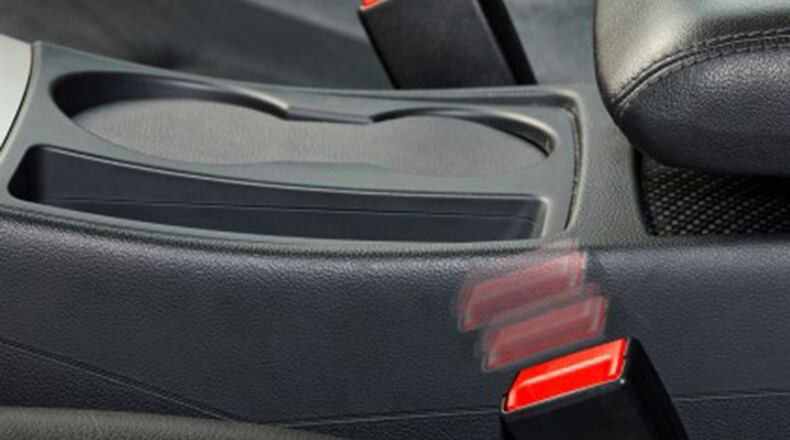The answer: ZF’s Active Buckle Lifter. It raises the buckle 2-3 inches so it’s easy to find, then retracts when the belt clicks in.
Lowering the point where a belt is latched to the seat frame helps assure the belt is across the occupant’s hip bones, not higher on the torso, ZF seat belt specialist Ed Schlaps said.
That prevents submarining, when a person slides under the seat belt and into the dashboard or seat back in front of them during an accident. Submarining can lead to serious leg injuries. It also reduces air bags’ effectiveness, because the occupant slides out of the position where the bags can cushion them.
The drawback: The system’s not cheap. ZF won’t say how much it costs, but the only vehicle that uses it today is the Mercedes S-class, which starts at $91,250.
The S-class has the buckle lifter in the rear seat, where, in addition to lifting the buckles to make them easy to find, it pulls them down into the seat cushions when they’re not being used, so occupants can slide across the seat without being rammed by the buckles.
Mercedes asked for that feature because China is a huge market for the S-class, so the car is frequently driven by chauffeurs and the rear seat is almost always occupied.
“Mercedes anted the buckle out of the way when not in use, but still easy to buckle,” Schlaps said.
The technology makes belting into the backseat of a strange car much easier than I generally find it in taxis and limos. I’d guess it makes back seat belt use more common.
Among vehicles built in North America, the buckle lifter’s first use will probably be for the driver’s seat because it’s always occupied and other seats are frequently empty, Schlaps said.
ZF has had development programs with several automakers for North American vehicles, but none made it to production so far.
“In North America, interest is for the driver’s comfort and convenience,” Schlaps said. The feature is also useful when people wear bulky winter clothing.
“In the S-class, we pull the buckle down deeper in when the sensors say a crash is likely to cinch the driver in more securely,” he added.
ZF could do that with front-seat buckle lifters, but current U.S. safety standards don’t allow the feature to be used during crash tests.
That’s because the sensors don’t recognize every possible kind of crash, as government safety standards require. The system also isn’t as quick as the pyrotechnic pretensioners that are common for front seat belts today. Pretensioners, like air bags, rely on a small explosive charge to tighten belts fast enough to reduce injuries even in high-speed crashes.
The price of a driver’s seat buckle lifter could fall if ZF eliminated the crash-response feature and used a smaller electric motor just to present the buckle for fastening and return to the optimum position.
If you still think seat belts are just low-tech pieces of webbing, ZF is also experimenting with electric retractors that can give the driver warnings as well as tightening in high-G maneuvers that could indicate an accident is coming. Called ACRs, or active control retractors, the belts can tug on the driver if the car wanders out of its lane or starts to merge into another vehicle. They can also tighten in response to autonomous emergency braking, before the brakes are applied.
In demo vehicles, the system is like having a backseat driver tap you on the shoulder, but slightly less annoying. Like other good driver alert systems, response quickly becomes reflexive
The ability to tighten before the driver even realizes they should brake is the key improvement in the current electronic ACR, which gets information from a vehicle’s electronic safety and driver assistance systems. Most seat belts still have a simple inertial sensor, which locks them in place when the occupant lurches forward in a crash or heavy braking. They’re quick, but not as quick as belts connected to the vehicle’s radar, brakes and steering.
About the Author
